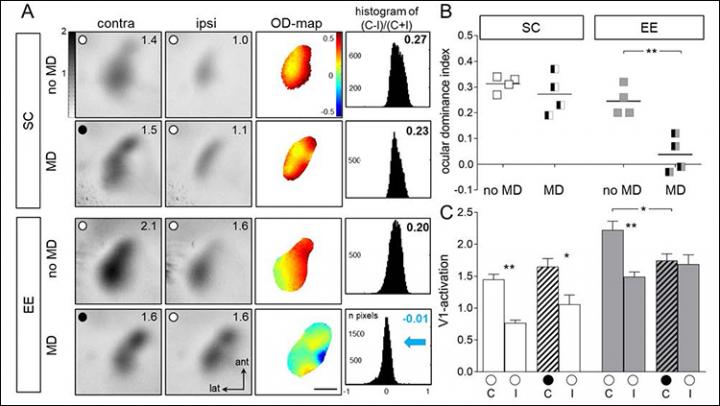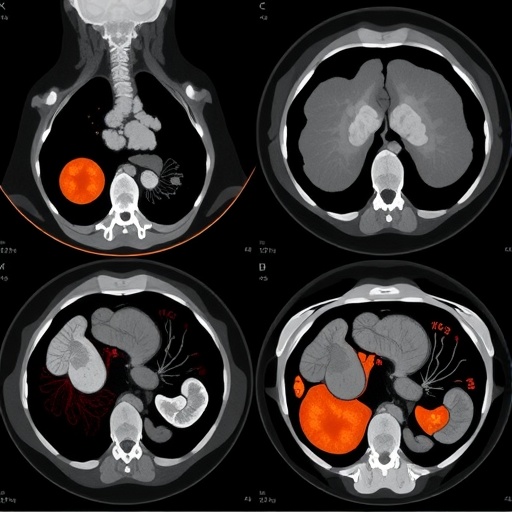Life experience may be transmitted from one generation to the next through changes in gene expression, parental caretaking

Credit: Kalogeraki, Yusifov, and Löwel, eNeuro (2019)
Mice growing up in a basic cage maintain lifelong visual cortex plasticity if their parents were raised in an environment that promoted social interaction and physical and mental stimulation, according to a multigenerational study published in eNeuro. The research suggests life experience may be transmitted from one generation to the next through a combination of changes in gene expression and parental caretaking behavior.
Blocking visual input to one eye of adult mice leads to a rewiring of the visual cortex to prioritize input from the open eye. Siegrid Löwel and colleagues first confirmed that this plasticity declines over time in mice housed in standard cages while it is preserved throughout life in mice raised in an enriched environment — in this case a large, two-story cage with separate living and eating areas connected by a ladder, regularly changed mazes, and a slide.
The researchers then bred the mice to create three experimental groups of offspring, all of which were raised in standard cages. Despite being raised in the same impoverished environment, mice whose parents — particularly mothers — were raised in the enriched environment maintained lifelong plasticity in the visual cortex. These findings emphasize the importance of documenting rearing conditions of experimental animals across generations.
###
Article: Transgenerational transmission of enhanced ocular dominance plasticity from enriched mice to their non-enriched offspring
DOI: https:/
Corresponding author: Siegrid Löwel (Universität Göttingen, Germany), [email protected]
About eNeuro
eNeuro, the Society for Neuroscience’s open-access journal launched in 2014, publishes rigorous neuroscience research with double-blind peer review that masks the identity of both the authors and reviewers, minimizing the potential for implicit biases. eNeuro is distinguished by a broader scope and balanced perspective achieved by publishing negative results, failure to replicate or replication studies. New research, computational neuroscience, theories and methods are also published.
About The Society for Neuroscience
The Society for Neuroscience is the world’s largest organization of scientists and physicians devoted to understanding the brain and nervous system. The nonprofit organization, founded in 1969, now has nearly 37,000 members in more than 90 countries and over 130 chapters worldwide.
Media Contact
David Barnstone
[email protected]
202-962-4000
Related Journal Article
http://dx.




